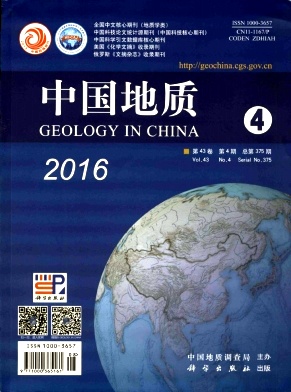WANG Peng, CHEN Xiao-hong, SHEN Li-cheng, XIAO Qiong, WU Xiao-qing. Reservoir temperature of geothermal anomaly area and its environmental effect in Tibet[J]. Geology in China, 2016, (4): 1429-1438. doi: 10.12029/gc20160426
| Citation: |
WANG Peng, CHEN Xiao-hong, SHEN Li-cheng, XIAO Qiong, WU Xiao-qing. Reservoir temperature of geothermal anomaly area and its environmental effect in Tibet[J]. Geology in China, 2016, (4): 1429-1438. doi: 10.12029/gc20160426
|
Reservoir temperature of geothermal anomaly area and its environmental effect in Tibet
-
1.
Center for Water Resources and Environment, Sun Yat-sen University, Guangzhou 510275, Guangdong, China;Key Laboratory of Water Cycle and Water Security in Southern China of Guangdong Higher Education Institute, Sun Yat-sen University, Guangzhou 510275, Guangdong, China
-
2.
School of Geographical Sciences, Southwest University, Chongqing 400715, China
-
3.
Institute of Karst Geology, CAGS, Karst Dynamics Laboratory, M L R, Guilin 541004, Guangxi, China
-
Abstract
The hydrothermal activity area of Tibet is located in the key area of Indian-Eurasia collision orogenic belt, belonging to the Mediterranean-Himalayan tropical and rich in hot water resources. As one of the important window to study geological tectonic evolution, geothermal system properties, and climate change, the hydrothermal activity area of Tibet has been one of the key scientific problems in the field of geology. Based on 336 water chemical data of hot springs and using a variety of geochemical geothermometers, the authors evaluated thermal reservoir temperature, inferred the spatial distribution of geothermal anomaly, and explored its geological environmental effect. The results show that the hot water temperature ranging from 10.12℃ to 97.64℃ and higher than 60℃ accounted for 38.9% of the total samples. Reservoir temperature ranging from 87.12℃ to 277.64℃ and the temperature between 120℃, 200℃ and 277.64℃ made up 18.7%, 40.5% and 40.8%, respectively. It is shown that high temperature geothermal systems are widely distributed in the area. High temperature thermal storage areas are concentrated in southern Tibet, which are stronger in the south and weaker in the north and distribution in clusters along fault zones. Hot springs density and high temperature heat storage areas have good matching relationship with NS-trending fault zone and seismic activity in space, but they are not in accord with the volcanic rock distribution.
-

-
-
Access History







 DownLoad:
DownLoad: